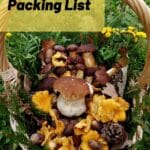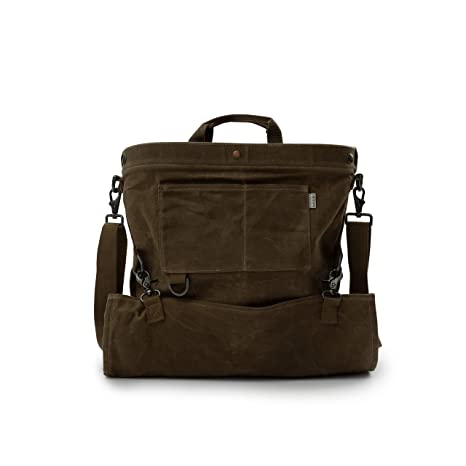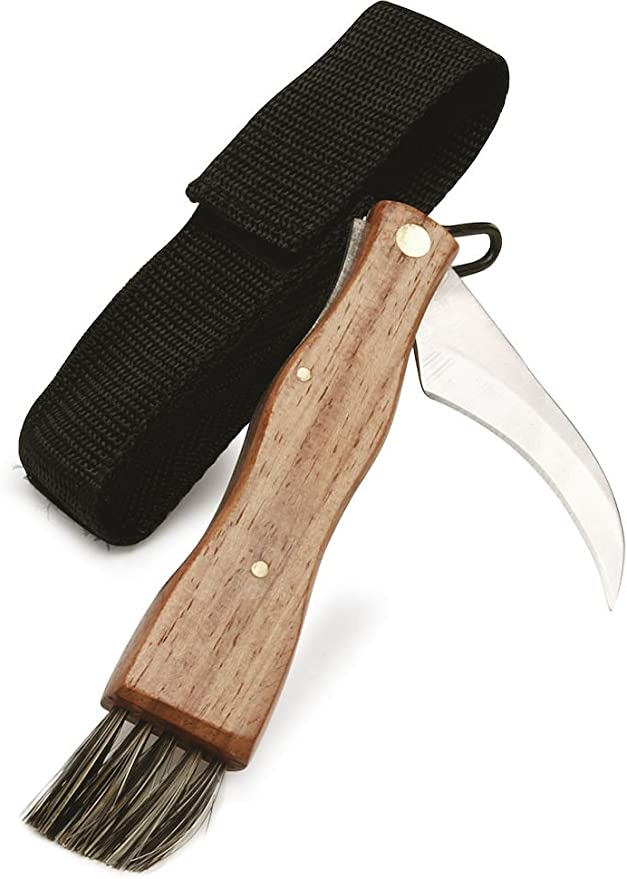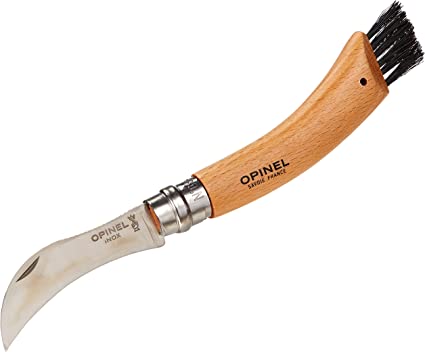Before you tromp off into the woods seeking mushrooms, it’s essential to make sure you have everything you need. A packing list eliminates unpreparedness, and makes for a more rewarding hunt. Improper tools lead to smashed-up mushrooms, lost and dehydrated hunters (or worse!), and a very frustrated forager (that’s you!).
What You Need – The Forager Packing List:
A Large Basket, Bucket, or Bag, I.E., A Mushroom-Carrying Device
There are many options for baskets, bags, and buckets. Which one you want to bring really depends on what you think you’re going to find and what you’re comfortable carrying.
The classic option is a woven basket since it is lightweight and won’t crush the mushrooms. Another benefit is that there is usually enough room to hold and sort several types of mushrooms. This ensures they will be transported safely.
The biggest downside to a basket is it is awkward to carry; this is especially true when traveling through dense woods. Large baskets get in the way, are difficult to maneuver, and might be too unwieldy.
A few gallon-size buckets work well when you’re seeking specialty mushrooms, like chicken of the woods or lion’s mane. These buckets can carry larger mushrooms without damaging them. They are a bit unwieldy in the woods, but if you know where you’re going and what you’re getting, it’s a quick and easy method to get the job done.
There are some neat sports bags that fit 5 or 6 gallon buckets for easy transport. They even have tons of pockets for fitting other essentials.
A backpack is excellent for more low-key on-the-move foraging, where you don’t want any hindering baskets or buckets to carry around. There are a number of fantastic hiking packs that serve well for foraging, too.
The biggest downside to backpacks is that they are soft-sided, and it is more difficult to protect the mushrooms from damage while on your back. They also aren’t great for holding large or especially bountiful harvests.
The exact mushroom-carrying vessel needed will really depend on what you are foraging (or intend to forage). If you’re seeking a specific mushroom species, bring a carrying vessel that protects the mushroom during transport. A basket is ideal for a wider-focused foraging adventure because it can hold many types of finds.
Paper and Mesh Bags
Mesh and paper bags are used to store and separate different types of mushrooms. Combining incredibly fragile species with a larger species will destroy them. For example, chanterelles, hedgehogs, black trumpets, and morels are easily damaged.
Only use mesh or paper bags, not plastic ones. Paper bags allow the mushrooms to breathe; this is vital to their preservation. Plastic retains moisture and will start your mushrooms decomposing or getting very slimy.
Mesh bags are super popular because they allow spores to escape through the holes. Hopefully, the spores spread around the forest as you walk, leading to more mushroom patches.
The mesh bags in which fruits and vegetables come in are great and an excellent way to reuse them. Or, you can buy ones specifically for foraging.
A Foraging Knife
A jackknife (or similar) is sufficient for most mushroom foraging. Usually, you just cut them from a tree or cut the stems at ground level.
Chanterelles, hedgehogs, morels, boletes, and oyster mushrooms all have easy-to-cut stems. Larger mushrooms, though, like chicken of the woods, puffballs, and hen of the woods, are better foraged with a larger knife.
If you’re a beginner, don’t stress about having a specific type of knife. People love their gear and like to suggest that you can’t forage without the proper equipment. You can go out with a steak knife if you want. Whatever works for you. However, getting a nice outdoors foraging knife is a good idea if you’re doing a lot of mushroom hunting. Mostly, this is because they’re made to be easy to carry and are sharp.
Two of the most popular foraging knives are curved, foldable, and have bristles at the end. The curved feature makes easier and cleaner cutting, while the bristles are there to brush the dirt off the harvested mushrooms.
Identification Book
It isn’t always possible to bring an identification book, but if you can fit one in your pack or basket, it’s a nice addition. This is also a bit essential if you’re new to foraging. A little book or fold-out guide is the best. Consult our review of mushroom identification books to find one for your region.
Foraging Planning Basics
Anytime you go out into the woods, make sure you are also at least minimally prepared for survival. It is surprisingly easy to get lost in the woods, especially when you’re focused on mushrooms and maybe not the trail, sun, or time of day. Foragers are known to ultra-focus and lose track of time!
- Water
- Bug repellent
- Map
- GPS or compass
- Snacks (a must!)
Wear proper, waterproof hiking boots or shoes, and dress appropriately for the weather. Always be prepared.
A Little Extra
Some fun internet finds for the unrepentant fungi fanatics!
Before you head out in the woods, read up on sustainable mushroom foraging and why it matters. Happy Foraging!





















Leave a Reply